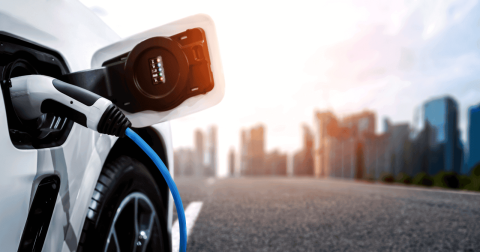CATL, Tesla, BYD, and Toyota Excited About Fast-Charging, Cost-Efficient Sodium-Ion and Solid State Batteries
Electric-vehicle batteries are on the brink of a sweeping upgrade. Over the next 24 months, a trio of next-generation chemistries—ultra-fast-charging lithium-ion, cost-efficient sodium-ion, and high-density solid-state—are scheduled to roll off pilot lines and into mass production. Industry leaders such as CATL, Tesla, BYD, and Toyota argue these advances will erase range anxiety, trim charging sessions to gas-station speed, and lower entry-level sticker prices. If deployment proceeds on schedule, 2025 could become the inflection point at which battery performance and economics tip decisively in favor of electric mobility, forcing legacy automakers, infrastructure providers, and commodity suppliers to recalibrate their road maps.
Three Chemistries, One Goal: Remove the Remaining Friction
CATL’s Freevoy Dual Power Battery layers lithium-ion and sodium-ion cells in a single pack, targeting a maximum driving range of roughly 1,500 kilometers—about double that of today’s top-tier long-range EVs. Shenxing Superfast Charging Battery, also from CATL, focuses on speed: it can recoup 520 kilometers of range in five minutes, a charging rate north of 1,300 kW. Industry production timelines coalesce around late 2025, placing commercialization only 18–24 months away for both chemistries and setting the stage for direct consumer adoption by the 2026 model year.
The Race to Ten-Minute Refueling
Tesla’s next-generation cell architecture, championed by Elon Musk, aims to cut pit stops to “gas-tank parity”—about 10 minutes from nearly empty to 80 percent state of charge. Cold-weather performance is no longer a footnote: CATL’s Shenxing pack maintains a 5%-to-80% recharge in 15 minutes at –10 °C, addressing a persistent northern-latitude pain point. System impact: A shift from today’s 30- to 45-minute sessions to sub-10-minute standards would quadruple vehicle throughput at existing fast-charging stations, easing infrastructure bottlenecks without proportional real-estate expansion.
Sodium-Ion: Affordability Meets Security of Supply
Cost advantage: Sodium sells for roughly five cents per kilogram versus lithium’s $15, trimming cell costs by 25–30 percent and opening the door to sub-Rs. 18-lakh entry-level EVs in emerging markets. Performance profile: First-generation sodium packs will deliver up to 500 kilometers on a single charge—adequate for mainstream commuters—even if energy density trails premium lithium-ion cells. Strategic upside: Sodium’s geographic abundance relieves supply-chain pressure, reducing exposure to lithium-price spikes and geopolitical chokepoints in South America and Australia.
Solid-State on the Horizon
Energy density above 500 Wh/kg could translate to 600-mile (965 km) ranges while maintaining compact pack dimensions. Charging capability: Laboratory prototypes suggest nine-minute 100-percent recharges, though scaling those results to mass production remains the industry’s tallest hurdle. Commercial timeline: BYD eyes demonstration fleets in 2027; Toyota targets a solid-state hybrid by 2025. Analysts, however, see full cost parity with liquid electrolyte cells arriving after 2030.
Infrastructure and Grid Ramifications
Ultra-fast chargers (≥1 MW) will demand upgraded distribution lines and substation capacity—an investment challenge for utilities and charge-point operators. Load leveling: Cheap sodium-ion packs are projected to capture 15 percent of stationary storage by 2025, smoothing renewables intermittency and providing ancillary grid services. Life-cycle sustainability: Solid-state batteries remove flammable liquid electrolytes, boosting safety scores and, in many formulations, reducing reliance on cobalt and nickel.
Competitive Positioning Among Automakers
Tesla and CATL lead in fast-charge lithium-ion; BYD controls vertical supply chains from raw materials to finished vehicles, giving it a scale edge in solid-state ramp-up; Legacy OEMs partnering with Toyota gain early solid-state access but may lag in sodium adoption unless joint ventures close quickly. Market implication: Companies that lock down multi-chemistry portfolios will hedge commodity risk and capture diverse consumer segments, from budget commuters to luxury road-trip buyers.
Investment and Policy Signals to Watch
Capital expenditure disclosures in upcoming earnings calls will reveal which firms are accelerating gigafactory retooling for new chemistries. Government incentives could pivot toward sodium and solid-state R&D grants, mirroring earlier lithium subsidies. Commodity markets may see lithium price softening as sodium adoption rises, while copper demand spikes with higher-capacity charging infrastructure.
Strategic Takeaways for Stakeholders
Automakers must balance R&D budgets across at least two chemistries to stay competitive in both premium and value segments. Utilities and charge-point operators should fast-track grid upgrades or risk bottlenecks once 1 MW chargers proliferate. Investors may find near-term alpha in suppliers of sodium refinement equipment, while keeping a long-term eye on solid-state electrolyte innovators.
Approaching the Watershed Year
If production milestones hold, 2025 will mark the most dramatic leap in battery capability since the first mass-market EV hit showrooms. Doubling range, slashing charge times, and lowering pack costs simultaneously would remove the final psychological and economic barriers blocking widespread adoption. For policy-makers, industry executives, and consumers, the message is clear: the EV future is no longer a distant horizon—it is arriving on the next product cycle.
